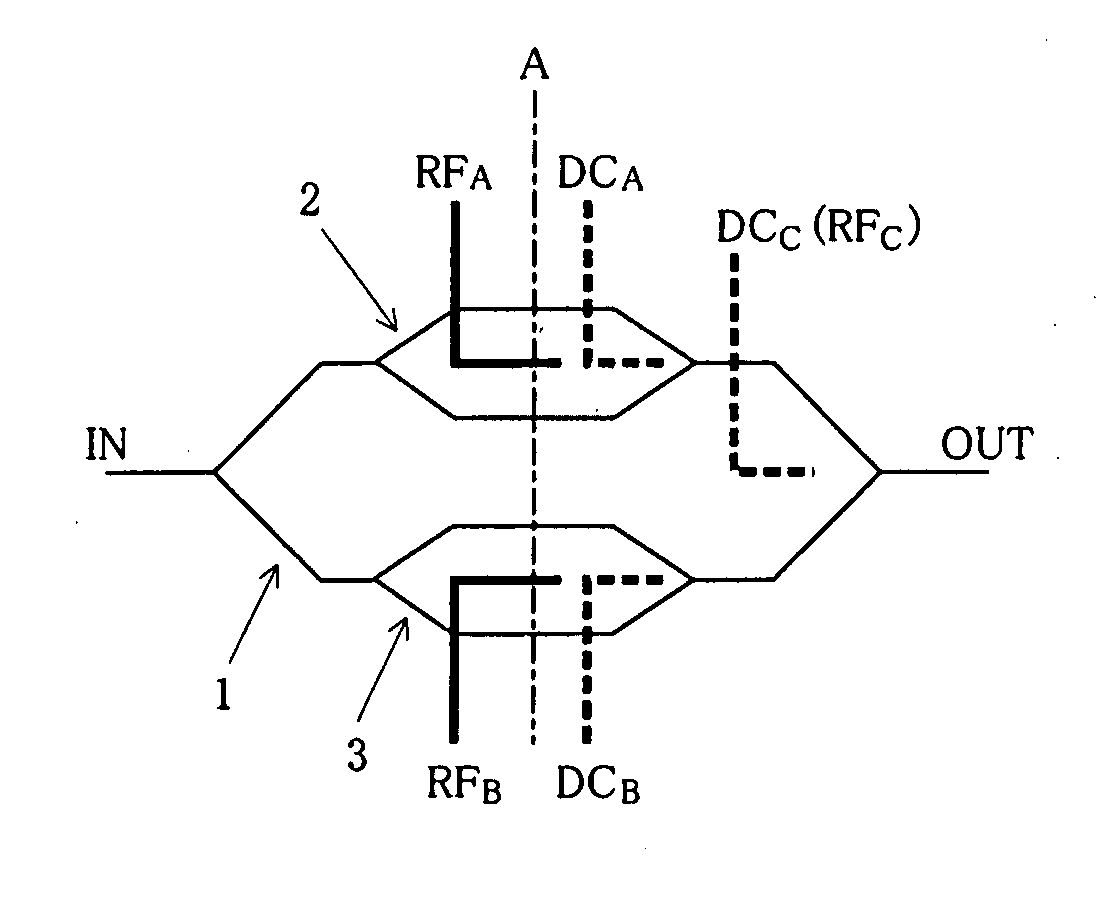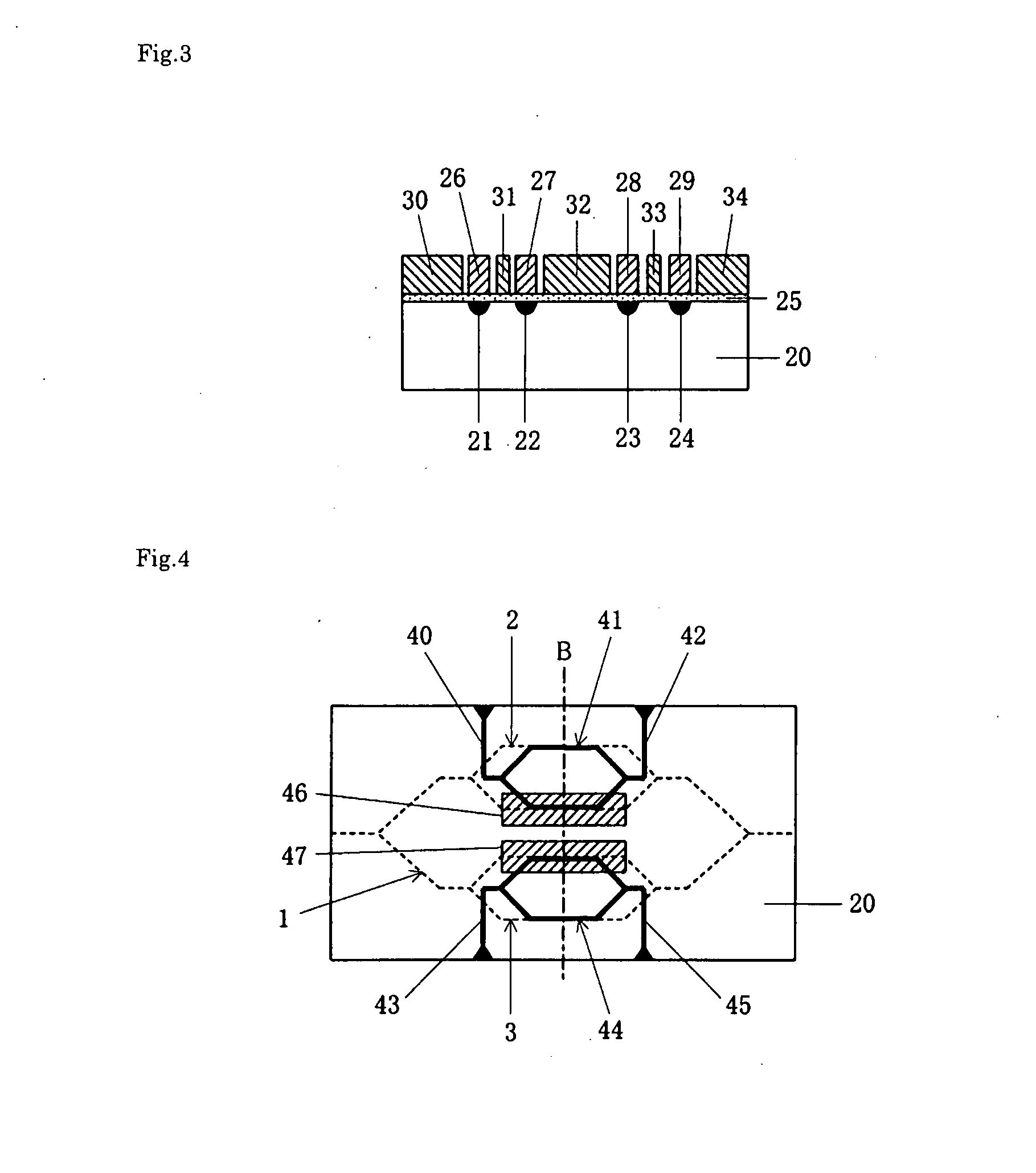Nested modulator
- Summary
- Abstract
- Description
- Claims
- Application Information
AI Technical Summary
Benefits of technology
Problems solved by technology
Method used
Image
Examples
Embodiment Construction
[0031]The nested modulator according to the present invention is described in detail in the following.
[0032]FIG. 4 is a schematic plan diagram showing the nested modulator according to the present invention, and FIG. 5 is a cross sectional diagram showing the nested modulator along one dot chain line B of FIG. 4.
[0033]The substrate 20 is a substrate having electro-optic effects which is formed of, for example, a lithium niobate, a lithium tantalate, PLZT (lead lanthanum zirconate titanate) or a quartz based material, concretely formed of an X cut plate, a Y cut plate or a Z cut plate of any of these single crystal materials, and in particular, it is preferable to use lithium niobate (LN) or lithium tantalate because it is easy to form an optical waveguide device of which the anisotropy is great. In addition, the below described ease of providing polarization reversal is taken into consideration, and FIG. 5 shows an example where a Z cut plate is used.
[0034]Optical waveguides in such...
PUM
 Login to View More
Login to View More Abstract
Description
Claims
Application Information
 Login to View More
Login to View More - R&D
- Intellectual Property
- Life Sciences
- Materials
- Tech Scout
- Unparalleled Data Quality
- Higher Quality Content
- 60% Fewer Hallucinations
Browse by: Latest US Patents, China's latest patents, Technical Efficacy Thesaurus, Application Domain, Technology Topic, Popular Technical Reports.
© 2025 PatSnap. All rights reserved.Legal|Privacy policy|Modern Slavery Act Transparency Statement|Sitemap|About US| Contact US: help@patsnap.com



